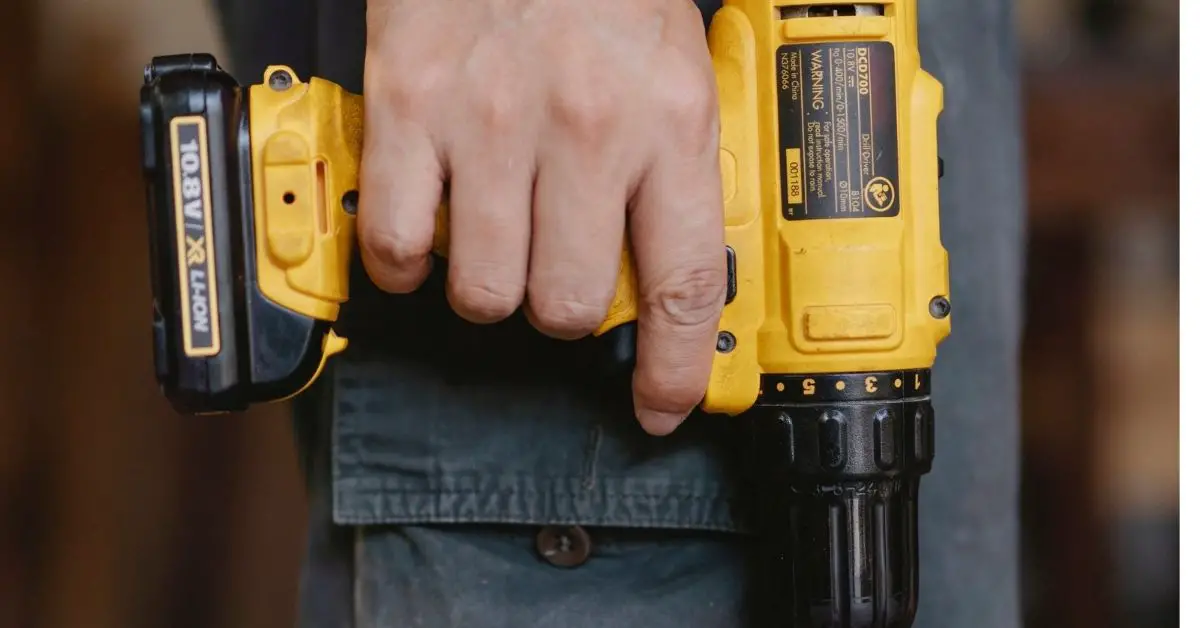Share

Drilling a hole in your wall can seem like an easy task. You need to find the studs, center the drill bit on the spot you want to drill, and start turning.
But what if you are drilling for something that is bigger than your drill bit? It may be tempting to just use brute force-but this will likely result in making a mess of your walls and ceiling. The alternative? Drill a smaller hole first, and then use it as a guide for drilling into place!
This might sound like a silly question. Can you drill a hole bigger than your bit? But, the answer is yes! And there are some great tips for how to do it too.
Everyone who has ever tried their hand at DIY knows that drilling holes in things can be an absolute nightmare! Whether wood, metal, or plastic, getting clean and accurate holes is no easy task.
This is especially true when the bit you are using on your tools isn’t big enough to make it through whatever material it is being used on! What happens then? How do you fix this problem that can be incredibly frustrating?
If only there were a way of drilling holes bigger than the size of your drill bits… Look no further because here are some great tips for getting around this issue and even some examples too!
How to Drill a Hole Bigger than your Drill Bit
Here are some tips to help you drill a hole bigger than your bit:
Use a Spade Bit
Spade bits are meant to drill larger holes than standard twist bits. They can be used with a hand-held or power drill and create round pilot holes that range from one inch to four inches in diameter. Spade Bits come in different types, such as flat bottom spades and dish-shaped spades. If you need a hole bigger than the maximum capacity of your bit.
Use A Masonry Drill Bit
Masonry drills have special fluted cutting edges specially designed for drilling through masonry, concrete blocks, and natural stone like marble, granite, etc. It has sharp teeth rather than a conventional smooth edge, which produces less vibration while making cuts. The design also creates an excellent dust/chips ejection system, so you don’t inhale toxic fumes or dust particles.
Drill Pilot Holes First
It is always a good idea to drill pilot holes before you drill big ones. Using the smaller bit as an “anchor” or guide will help you control your larger bit and prevent it from walking across the surface of whatever material you’re drilling into. The smaller hole guides the large one where you want it to go with less damage than if just putting in a bigger bit and hoping for the best!
Remember: Bigger Drills are not Always Better!
Use caution when using different size bits together on demanding applications such as hardwood, metal etc. For example, use a spade bit only on soft surfaces like plywood or drywall because they can leave rough edges on the hole.
Use a Drill Press or Handheld Power Drill
Drilling with power drills can be dangerous if you don’t have the right knowledge and experience, so it is always best to use them under the proper guidance of an expert drill press operator. If you are using one anyway, make sure your bit matches the capacity of your drill!
If You Break A Bit While Drilling Big Holes…Don’t Panic!
Most holes in walls/floors etc. are not structural, so unless it’s made from brick or stone, support beams won’t go crashing down on top of you! Just remove all debris from the inside wall cavity, then patch up any damage to drywall surfaces around the opening before re-installing another piece of drywall to cover the hole.
With these DIY tips, you can be confident that your next big drill job will go off without a hitch! You also check our articles about how to make a spot weld drill bit and how to bolt down a drill press.



0 Comments